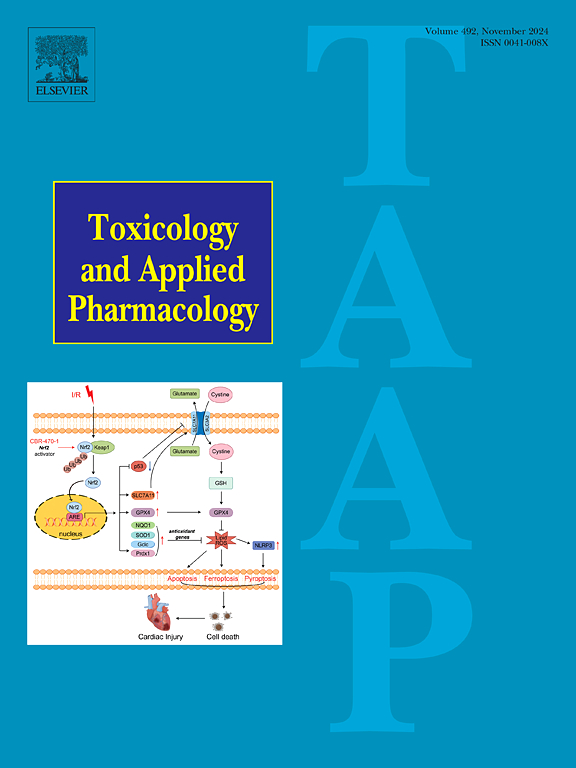Differences in chemotherapeutic drug sensitivity before and after patient-derived tumor organoid construction
IF 3.3
3区 医学
Q2 PHARMACOLOGY & PHARMACY
引用次数: 0
Abstract
Background
Patient-derived organoids (PDOs) have emerged as promising preclinical models for various tumor types. This study aimed to optimize the process of constructing 3D organoid models and facilitate the development of personalized therapies for gastric and colon cancers.
Methods
Tumor tissues were divided into two parts: one part was dissociated into a single-cell suspension, and the other part was used to culture tumor organoids. RNA sequencing (RNA-seq) was performed on both tumor cells and cultured organoids. Four chemotherapeutic agents-Oxaliplatin (L-OHP), Gemcitabine (GEM), 5-Fluorouracil (5-FU), and Paclitaxel (PTX)-were utilized to assess cytotoxicity and proliferation in both organoids and freshly isolated tumor cells, then the effects of these agents were evaluated.
Results
Organoids were successfully established from both surgically resected and biopsy-derived tumor tissues. Phenotypic analysis indicated that the organoids retained the histological features and expression profiles of the original tumors. Notably, the morphological characteristics of the organoids remained stable across passages, demonstrating robust growth over time. Differentially expressed genes were identified in both gastric and colon cancer PDOs. GO and KEGG pathway analyses revealed similar gene enrichment in gastric and colon PDOs. Both gastric and colon cancer PDOs exhibited increased significant sensitivity to PTX and 5-FU compared to freshly isolated cancer cells. Furthermore, the expression of most stemness-related genes was reduced after organoid culture.
Conclusions
We successfully established organoid models that demonstrated robust growth and heightened drug sensitivity compared to freshly isolated tumor cells. These findings suggest that caution should be exercised when interpreting drug sensitivity results from organoid-based assays.
患者衍生肿瘤类器官构建前后化疗药物敏感性的差异
患者源性类器官(PDOs)已成为各种肿瘤类型的有前途的临床前模型。本研究旨在优化三维类器官模型的构建过程,促进胃癌和结肠癌个性化治疗的发展。方法将肿瘤组织分成两部分,一部分分离成单细胞悬液,另一部分用于培养肿瘤类器官。对肿瘤细胞和培养的类器官进行RNA测序(RNA-seq)。采用奥沙利铂(L-OHP)、吉西他滨(GEM)、5-氟尿嘧啶(5-FU)和紫杉醇(PTX) 4种化疗药物对类器官和新分离肿瘤细胞的细胞毒性和增殖进行了评估,并对这些药物的作用进行了评估。结果从手术切除的肿瘤组织和活检来源的肿瘤组织中均成功建立了类器官。表型分析表明,类器官保留了原始肿瘤的组织学特征和表达谱。值得注意的是,类器官的形态特征在整个传代过程中保持稳定,随着时间的推移表现出强劲的增长。在胃癌和结肠癌PDOs中均发现了差异表达基因。GO和KEGG通路分析显示,胃和结肠PDOs中类似的基因富集。与新分离的癌细胞相比,胃癌和结肠癌PDOs对PTX和5-FU的敏感性显著增加。此外,类器官培养后,大多数干细胞相关基因的表达减少。结论:与新分离的肿瘤细胞相比,我们成功建立的类器官模型表现出强劲的生长和更高的药物敏感性。这些发现表明,在解释基于类器官的检测的药物敏感性结果时应谨慎。
本文章由计算机程序翻译,如有差异,请以英文原文为准。
求助全文
约1分钟内获得全文
求助全文
来源期刊
CiteScore
6.80
自引率
2.60%
发文量
309
审稿时长
32 days
期刊介绍:
Toxicology and Applied Pharmacology publishes original scientific research of relevance to animals or humans pertaining to the action of chemicals, drugs, or chemically-defined natural products.
Regular articles address mechanistic approaches to physiological, pharmacologic, biochemical, cellular, or molecular understanding of toxicologic/pathologic lesions and to methods used to describe these responses. Safety Science articles address outstanding state-of-the-art preclinical and human translational characterization of drug and chemical safety employing cutting-edge science. Highly significant Regulatory Safety Science articles will also be considered in this category. Papers concerned with alternatives to the use of experimental animals are encouraged.
Short articles report on high impact studies of broad interest to readers of TAAP that would benefit from rapid publication. These articles should contain no more than a combined total of four figures and tables. Authors should include in their cover letter the justification for consideration of their manuscript as a short article.

 求助内容:
求助内容: 应助结果提醒方式:
应助结果提醒方式:


